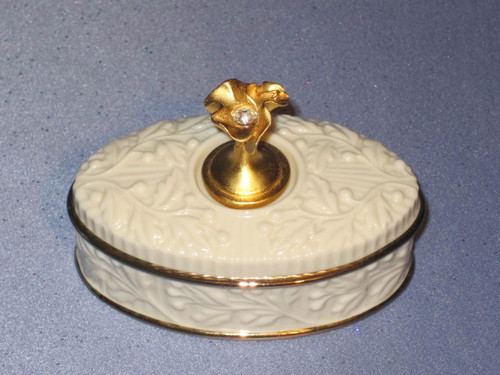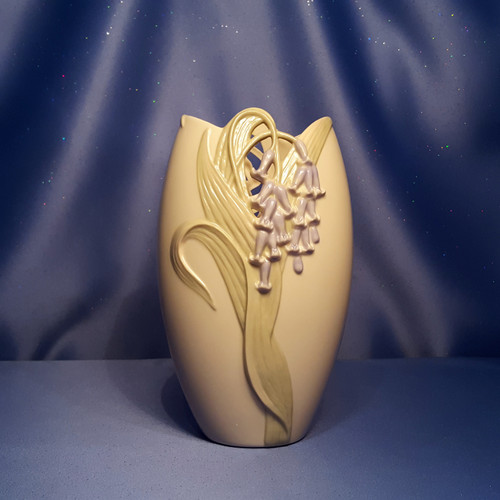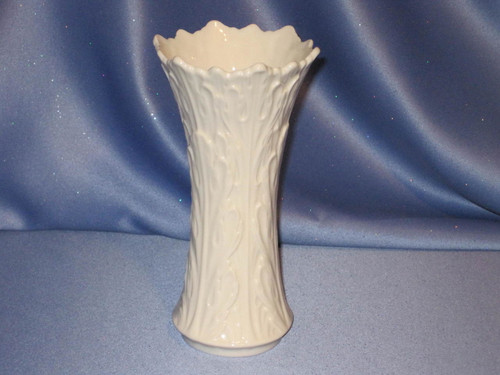Lenox
The Significance of Markings on Lenox China
Lenox has made it fairly easy to identify the age of its china. The first pieces were stamped with “Ceramic Art Company” or “Lenox Belleek,” depending on the style. In 1906, the stamp was changed to a green wreath surrounding the letter “L,” with the name Lenox below it. (Nevertheless, even if the company name is missing, it is still authentic if it has the wreath logo.) In 1930, the phrase “Made in U.S.A.” was included. This stamp remained the standard backstamp until 1953, when the wreath’s color was changed to gold.
Another way of identifying Lenox china is by the date code. If there is not a pattern name, look for a series of letters and numbers either on the bottom or on the rim of a piece. The first set of numbers before the slash describes the piece’s shape. Next, you will find a letter and a number (and sometimes, a second letter), which makes up the date code. After the date code, you should see a string of letters which correspond to a piece’s pattern colors. If you find a date code but no pattern name, the piece was likely created before 1950—the year when Lenox quit using the date code system.




















